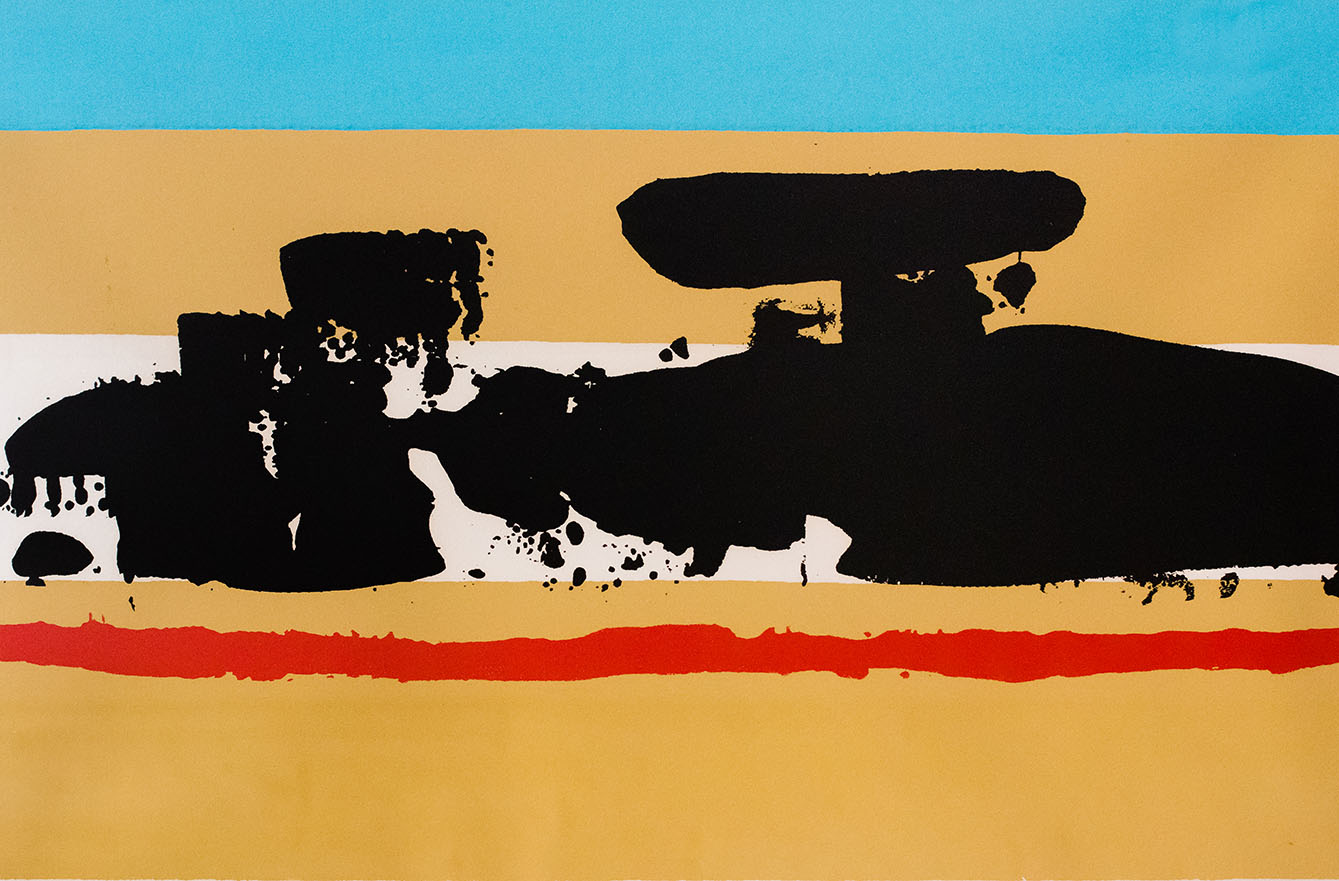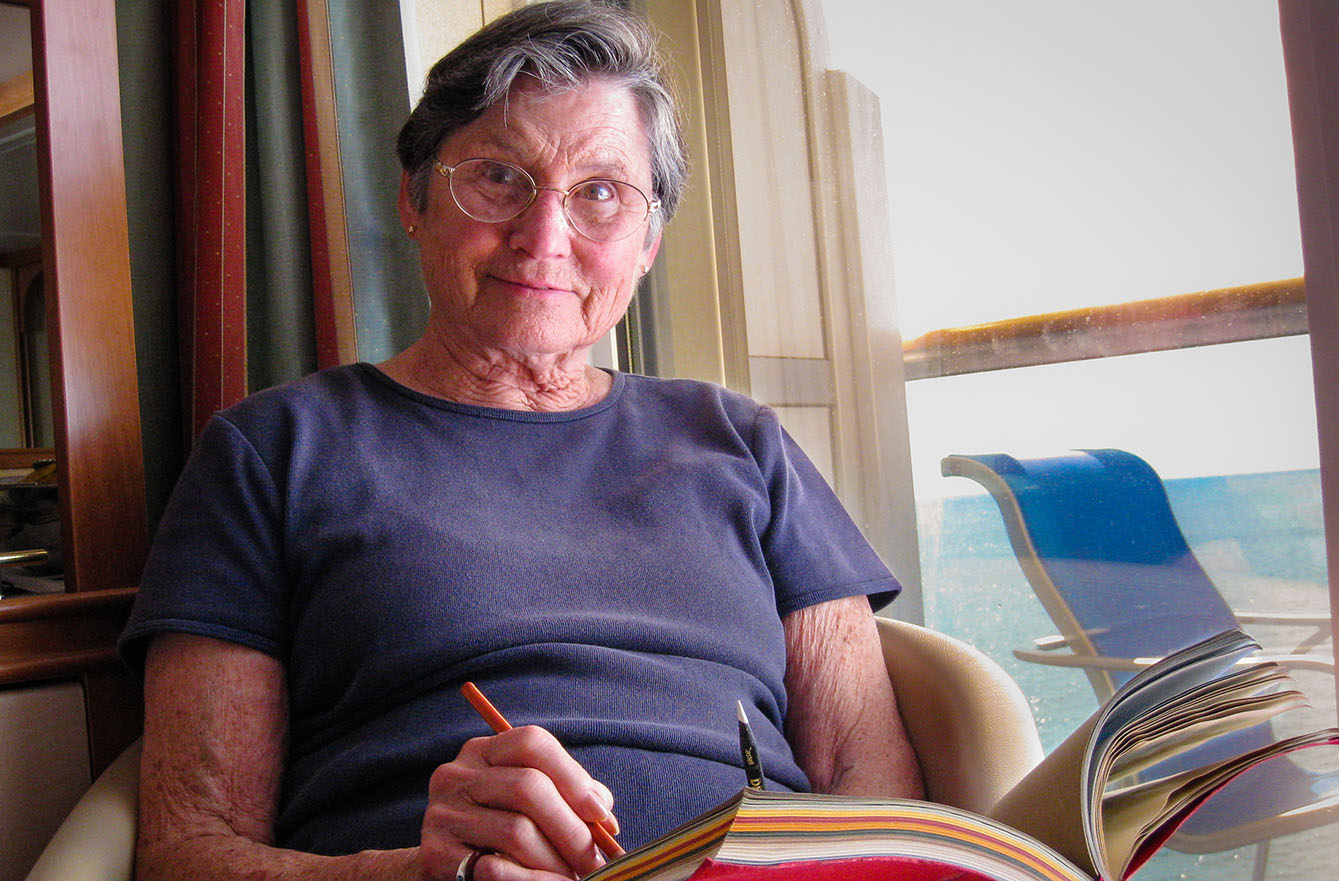HOW SHOULD A LIFELONG ARTIST DEFINE SUCCESS?
By Luna Wright (patreon.com/warpspeedluna)
How does an artist define success? Some might say that universal acclaim, like that for artists such as Van Gogh or Rembrandt, is the measure we’re looking for. Others might say that mastering the craft, putting in the ten thousand hours, is enough. For others, the definition of success is more ambiguous, tenuous — a definition with moving goal posts, constantly changing to mark a place as yet unreached. Doris B. Wright, an artist who dedicated decades upon decades to her craft, leaned into this last definition throughout over eighty years of creation.
Doris moved from Fort Worth, Texas to New York City alongside her sister when they were both barely adults. Her sister, Patricia Swift, was aiming for Broadway while Doris aimed to study art. Patricia was soon cast in plays and television shows, and Doris worked drawing fashion magazine advertisements as she honed her craft at the Art Students League. Despite their lofty aspirations and fifteen or more years in Manhattan, both ended up marrying and moving away from the city, settling down to start families of their own.
This was the beginning of the end of Doris’s art career as a working artist, although not the end of her pursuit of creation. As Doris focused on raising two sons of her own, the bustling community of Manhattan artists slipped away, her peer group slowly dwindling. “This is what women have to suffer,” Doris’s youngest son, Dave Wright, says as he recalls Doris’s withdrawal from the artistic community. “When they have children, they give up their career. In New York she was a professional illustrator, but when she moved to Croton she became isolated.”
While her professional career as an illustrator may have been put on the back burner, Doris found success through art in other ways. She would spend hours upon hours of dedicated study on one medium of art — wood block carving, for example — before moving on to spend years, sometimes even a decade, on the next. Despite withdrawing from the hustle and bustle of Manhattan for a quiet family life at home, Doris’s work never lost the experimental quality that made it shine.
Dave fondly recalls his childhood home, which had an artist’s loft on the second floor where Doris escaped every evening to immerse herself in her art. “My mother was always in the studio working on art, and dad was always in his office writing music,” Dave recalls. Doris’s husband, composer and Emmy-nominated musician Rayburn Wright, had both the acclaim and the artistic mastery that many use to define artistic success. He steadfastly supported his wife’s creative process, collaborating with her to create album covers, posters, logos for the jazz program he spearheaded at Eastman School of Music. Dave was quick to note, “He treated her creative process with respect.”
After her children were grown and after the early passing of her beloved husband, Doris still maintained, even deepened, her dedication to the artistic craft. Woodblock, silk screens, lithography, abstract oil painting, calligraphy, mixed media pieces, computer art, watercolors, acrylics, there was no medium Doris wouldn’t explore. After Ray’s death, she created a series of pieces which incorporated sheet music he had written, calligraphy, painting, bringing different mediums together to express her grief.
But even with her vast library of works, her years dedicated to each medium in turn, she was still self-critical, still regretted her lack of commercial success. She found happiness and fulfillment in art — she loved traveling to new places and spending an hour or three with her sketchbook, recording what she saw through ink and paper in a way that couldn’t be captured with simple memory, a mindset passed down to her son, who translates travel experiences into music. But if ever asked about her own art, Dave recalls, “She was very self-deprecating. I’m sure she thought she could do better than what she produced.” In fact, the only way Dave was able to tell which of her own pieces Doris favored when he sifted through her works after her death was to see which ones she’d made the effort to frame.
So, what defines a successful artist? If I can move the goalposts one last time for Doris, I’d like to suggest the measure of success is in complete dedication to creation, and very little to do with its reception. Doris may not have seen her art hung in the MoMa or the Met, but the fact that the flame of creativity and passion did not burn out, that she committed thousands and thousands of hours of the one life she had to live towards the singular pursuit of art, that’s the mark of a successful artist from where I stand.
She saw the beauty in everything, and even the smallest things could light the spark for her. “She was open to making anything into art,” Dave’s voice still holds a tone of wonderment regarding his mother’s creations, “crumpled leaves, a pebble, anything. She had a little board on her desk when you went into her studio with a few little rocks, and she would periodically change them in different ways, rearranging them depending on her vision. Anything could be art to her.”
You can see examples of original art by Doris B Wright here.
==
ABOUT THE AUTHOR:

Luna Wright is the granddaughter of Doris Wright and daughter of Dave Wright, and is proud to be continuing the tradition of creativity within the Wright clan. To follow Luna’s ongoing writing projects, including her first book “The Blackest Blue”, published July 1, 2022, visit patreon.com/warpspeedluna. Luna’s dystopian fiction novel “The Blackest Blue” is available for purchase in hardcover, paperback, Kindle, and audiobook versions here.










Leave A Comment